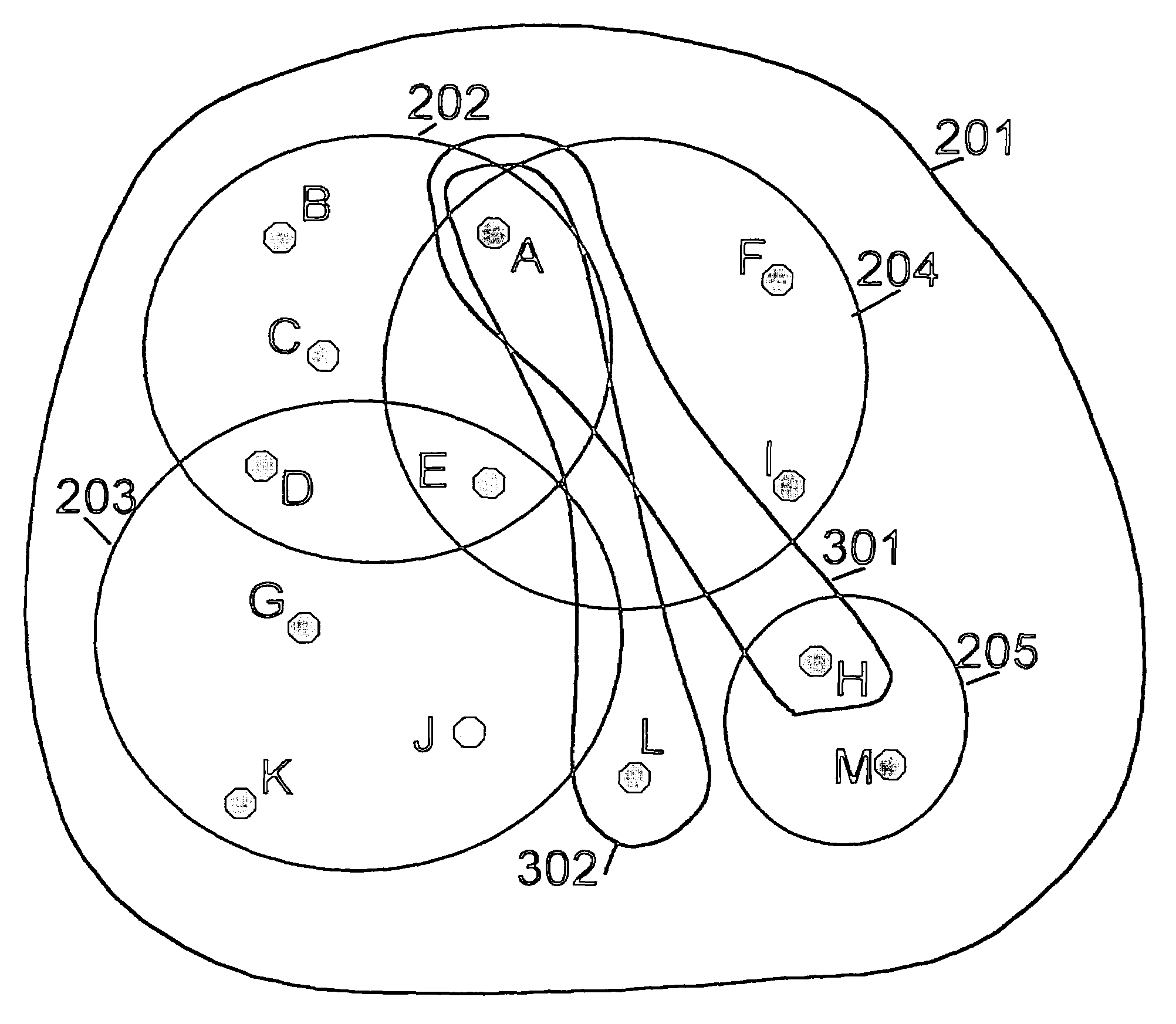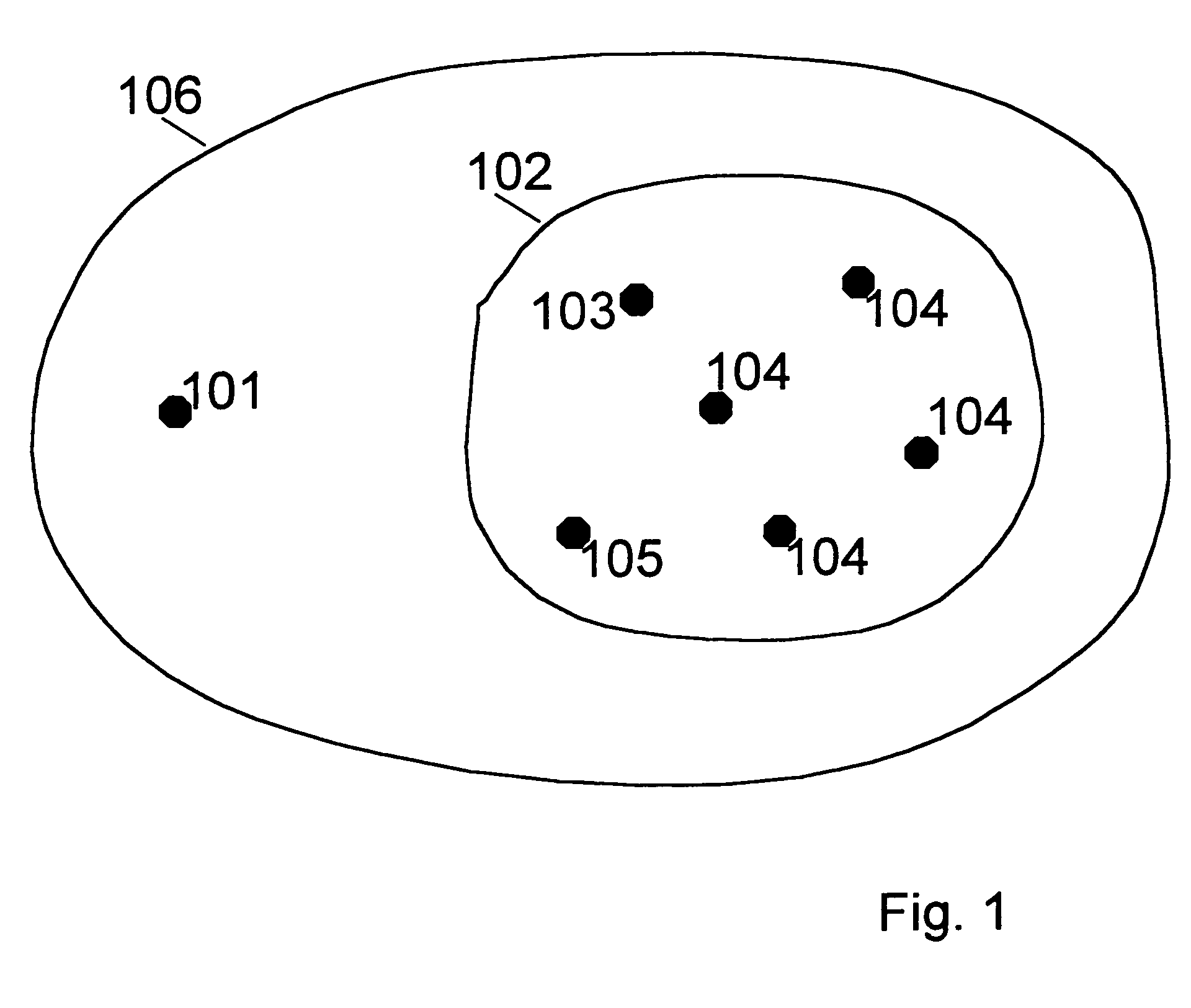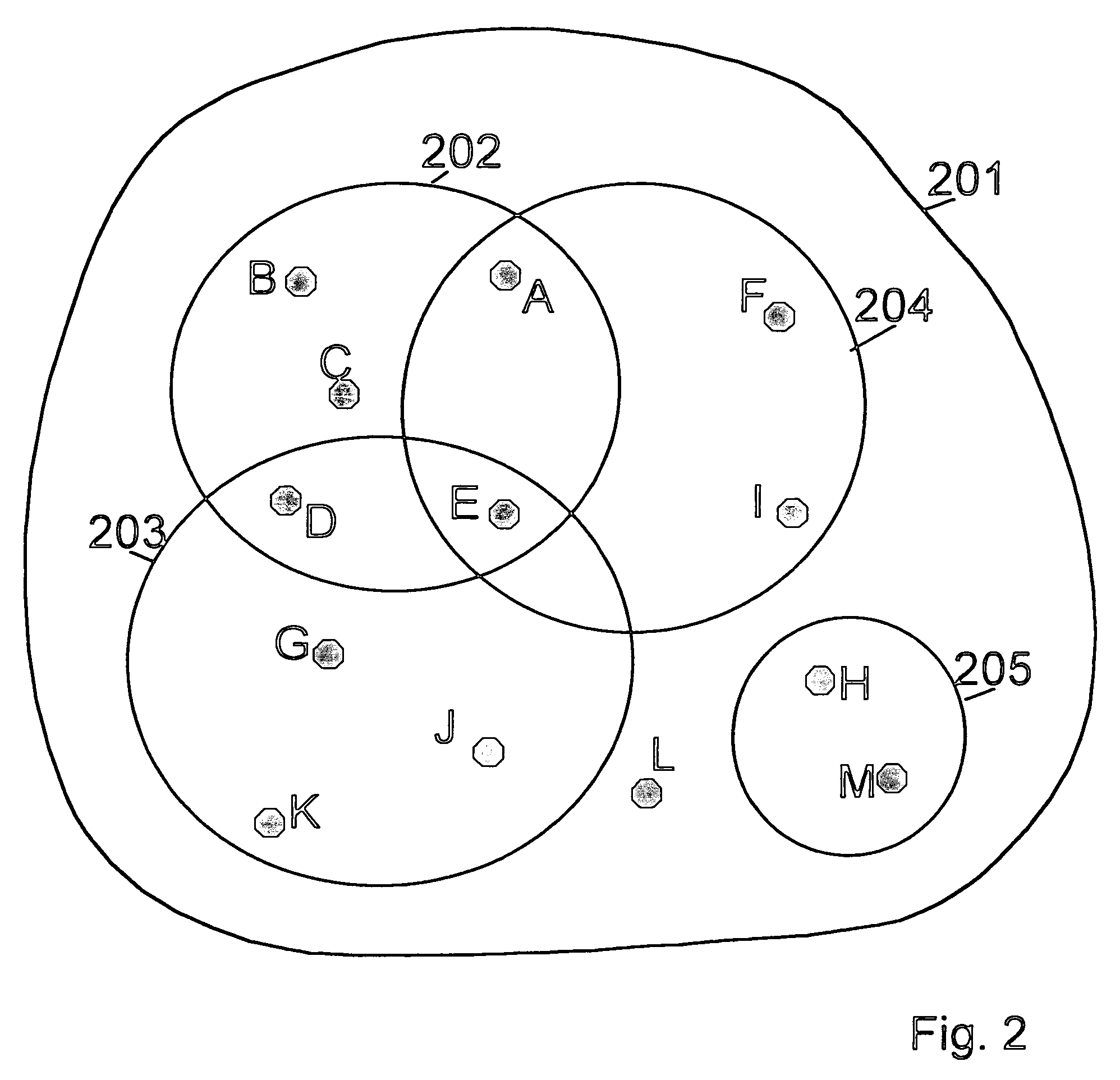Method and arrangement in a communication network
- Summary
- Abstract
- Description
- Claims
- Application Information
AI Technical Summary
Benefits of technology
Problems solved by technology
Method used
Image
Examples
Embodiment Construction
[0027]The ad hoc communication network according to the invention constitutes e.g. a bluetooth network. The ad hoc network comprises nodes constituting e.g., laptops and mobile phones, each node comprising a receiver and a computer, the computer comprising a processor and a memory. The nodes are interconnected via communication links.
[0028]FIG. 1 shows a possible scenario of the present invention in which a single node 101 is added to an existing trust group 102. The trust group 102 comprises nodes 103–105. All the nodes 103–105 in the trust group 102 have mutual trust relations with each other, the trust relations being created with trusted public keys. Thus each node 103–105 in the trust group 102 has the trusted public keys of all the other nodes 103–105 within the trust group 102. The trusted public keys are e.g. used to sign messages to be sent between trusted nodes. The single node 101 and the trust group constitute an ad hoc communication network 106. According to the inventi...
PUM
 Login to View More
Login to View More Abstract
Description
Claims
Application Information
 Login to View More
Login to View More - R&D
- Intellectual Property
- Life Sciences
- Materials
- Tech Scout
- Unparalleled Data Quality
- Higher Quality Content
- 60% Fewer Hallucinations
Browse by: Latest US Patents, China's latest patents, Technical Efficacy Thesaurus, Application Domain, Technology Topic, Popular Technical Reports.
© 2025 PatSnap. All rights reserved.Legal|Privacy policy|Modern Slavery Act Transparency Statement|Sitemap|About US| Contact US: help@patsnap.com



